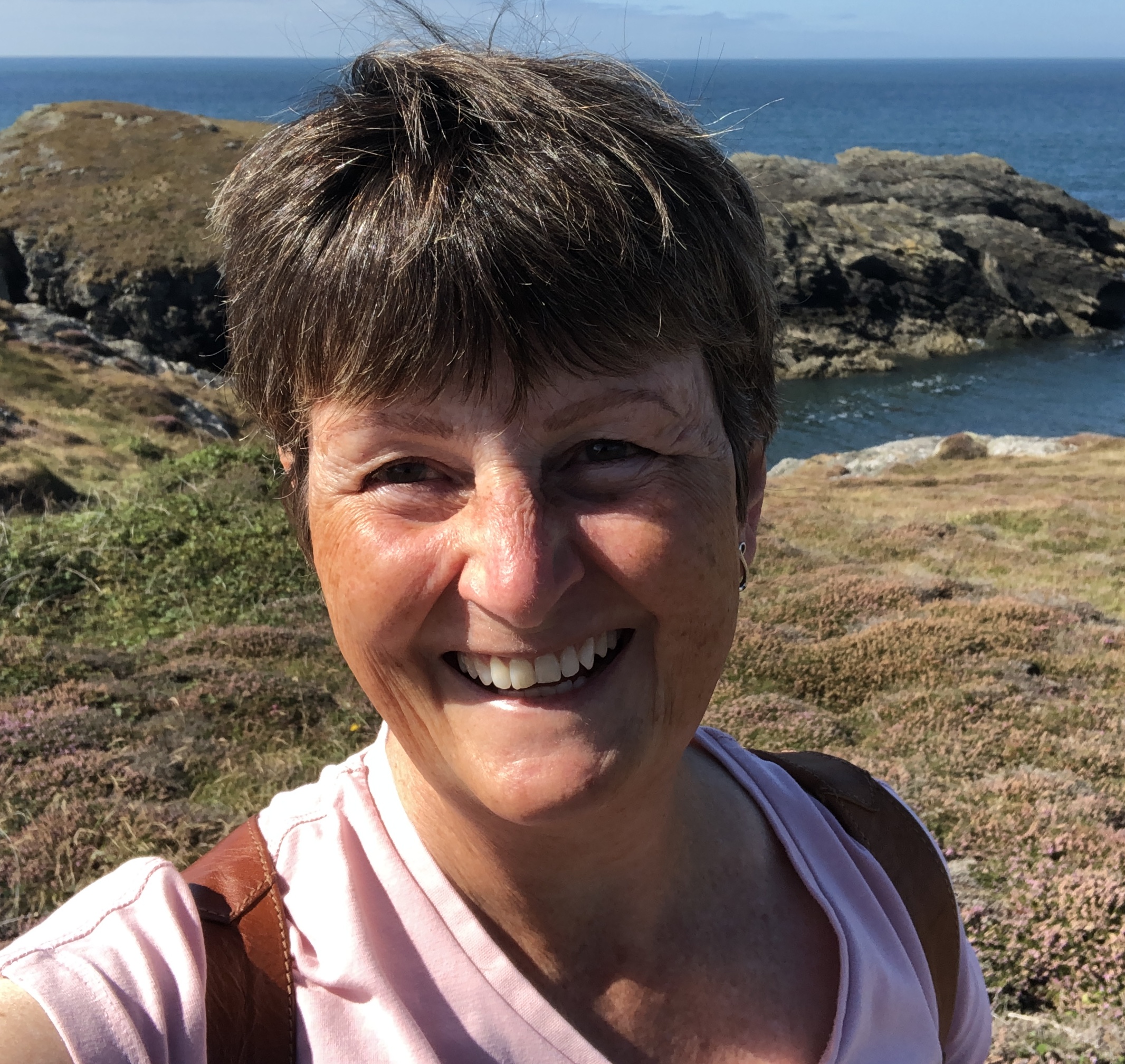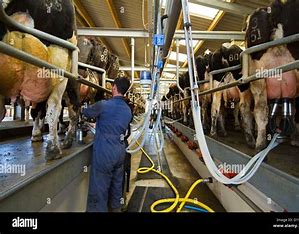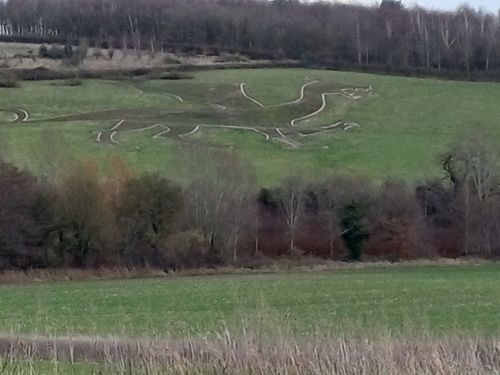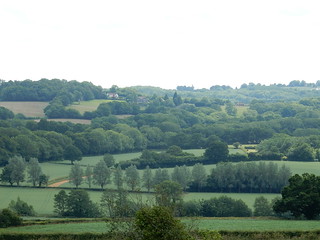This turns into a day of unexpected drama and wild storms. But the morning starts quietly enough.
 Bank holiday weekend and the weather is suitably unpleasant. The tide is high and Sea Palling sea defences are partially submerged, with only the tops of their artificial reefs visible above the waves. Our B&B landlord has a nephew who was involved in making these rocky walls. He described how huge boulders were ferried on a large barge from Norway and dropped painstakingly into the sea to form the linear array of sea defences standing just offshore from the beach.
Bank holiday weekend and the weather is suitably unpleasant. The tide is high and Sea Palling sea defences are partially submerged, with only the tops of their artificial reefs visible above the waves. Our B&B landlord has a nephew who was involved in making these rocky walls. He described how huge boulders were ferried on a large barge from Norway and dropped painstakingly into the sea to form the linear array of sea defences standing just offshore from the beach.
I walk south-eastward along the sand, glad to be here on this lovely beach – and looking forward to the day ahead. At this early hour, with the sky overcast, there are only a few families making their way onto the sands. I soon leave them behind and walk for the next two miles on empty beach with only my own footprints for company. I am loving this.
 Then, suddenly, I see a dog’s grey muzzle in the water – a labrador I think – about 20 yards from shore. Its muzzle is pointing upwards and, with hair sleeked back on it face, it seems to be struggling to keep afloat. Then it disappears beneath the waves. My heart stops. I believe I have just seen a dog drown. For one wild moment I contemplate plunging into the cold sea. I stand, helpless and agitated, close to the breaking waves. Why was this dog swimming alone in this cold sea? Suddenly a grey shape surfaces. I notice large eyes, small ears and whiskers. I realise, with intense relief – it’s not a dog. It’s a seal.
Then, suddenly, I see a dog’s grey muzzle in the water – a labrador I think – about 20 yards from shore. Its muzzle is pointing upwards and, with hair sleeked back on it face, it seems to be struggling to keep afloat. Then it disappears beneath the waves. My heart stops. I believe I have just seen a dog drown. For one wild moment I contemplate plunging into the cold sea. I stand, helpless and agitated, close to the breaking waves. Why was this dog swimming alone in this cold sea? Suddenly a grey shape surfaces. I notice large eyes, small ears and whiskers. I realise, with intense relief – it’s not a dog. It’s a seal.
For the next half hour, as I walk along the beach, I am watched by seals. They pop up a few feet from the shore, faces turned towards me, large eyes watching. When I pull my camera out, they wait until I have it aimed and focused – then, before I can get a decent shot, they slip back under the choppy waves, laughing at me. Sometimes they are in groups of two or three. I see old ones and young pups. One young one becomes particularly nosey. Watching me, it comes too close to shore and gets caught in the breaking waves. I see its small body rolling in the surf and hope it is not too bruised by the tumble of waves against the shingle.
Ahead of me I see the distant figures of people – families out on the beach, people walking, young lads fishing, kite fliers and joggers. This must be Horsey Gap. Some people have spotted the seals swimming and are pointing and laughing with delight.

The wind is behind me and I did not notice the dark clouds until the first rain squall hits. I am glad I am wearing a rainproof jacket. I pull my hood up and bury my iPhone in an inner pocket. The rain is stingingly painful and, I suddenly realise, it is hailing. Hail stones bounce on the sandy beach around me. There is a flash and thunder rumbles across the sky. Almost by magic, the people on the beach disappear, running back from the sea through the dunes – probably to the dry safety of cars, parked unseen behind the sandy dunes.
The hail stops as suddenly as it starts. A few moments later the sun peeks out and, within a few minutes, my clothes are dry again. Enjoying the empty beach, I continue onwards and then another dark cloud covers the sun and stinging hail whips down across the sand again. Within a few minutes my trousers are wet. By now the beach has widened and, as the hail stops, I see people emerging from a car park ahead of me. I have reached Winterton-on-Sea.
 This is where I am meeting my husband for lunch. So, I turn landward, walking along a narrow lane. I notice some pretty little thatched cottages, pastel colours and circular in shape, on the low hill overlooking the sea.
This is where I am meeting my husband for lunch. So, I turn landward, walking along a narrow lane. I notice some pretty little thatched cottages, pastel colours and circular in shape, on the low hill overlooking the sea.
Suddenly the sky darkens again and the wind picks up. I know what is coming – more hail. As I approach the outskirts of the village, I spot a phone box. Shelter! I dash towards it, feeling the first smatter of hail against the back of my hood. Just in time. From the safety of the phone box, I watch the hail lash down with stones as large as small marbles. Lightening flashes and thunder crashes. The hail sounds like machine gun fire on my metal box. There is a stampede back from the beach and people run past clutching picnic boxes, windbreaks, umbrellas, towels and other paraphernalia. They look longingly at my phone box shelter – I feel quietly smug.
Then I see a cyclist on the road ahead. Ah, my husband. “Get in the phone box!” I call to him. He is worried by the lightning. Should we be in a metal box in a lightning storm? He hesitates, holding the door open. Hail stones bounce in. “In or out. I don’t care which. Just shut the door!” I shout. He gets in. I am damp. He is drier. He escaped the first two hail storms.
When the storm lessens, we head to the pub. I have two glasses of cider and a very large plate of asparagus quiche and salad. Truly delicious.
 After lunch, I walk down the access road to the beach. Then, seeking different scenery, I walk on top of the dunes that line the coast between here and Hemsby. I enjoy the vantage of a higher view-point and take some great photographs. Ahead of me stretches the coast and I believe that I am looking at Scratby and California Gap. My map, as usual, shows a straight line; but my eyes show two gently curving bays. In the sea ahead is a line of wind turbines – rising gracefully out of the sea and showing off their turning blades against the skyline. There are a few walkers on the beach. The sky is constantly changing, with threatening black clouds giving way to fluffy white and blue skies, then turning black again.
After lunch, I walk down the access road to the beach. Then, seeking different scenery, I walk on top of the dunes that line the coast between here and Hemsby. I enjoy the vantage of a higher view-point and take some great photographs. Ahead of me stretches the coast and I believe that I am looking at Scratby and California Gap. My map, as usual, shows a straight line; but my eyes show two gently curving bays. In the sea ahead is a line of wind turbines – rising gracefully out of the sea and showing off their turning blades against the skyline. There are a few walkers on the beach. The sky is constantly changing, with threatening black clouds giving way to fluffy white and blue skies, then turning black again.
I grow tired of the constant up-and-down of the dune path and make my way onto the beach again. I pass two elderly joggers in shorts, grimly beating a path along the firm sands and keeping close to the breaking waves. I see a man in shorts and bare feet, with rugged face and unkempt hair, saluting the sea. His trainers hang from the back of his rucksack. He passes me and I try to catch his eye, but he avoids contact.
 Then, suddenly, the sky is black again. I feel the familiar rat-a-tat of hail stones on my jacket. This time the hail is wetter than before and the wind drives hail stones and rain drops against the back of my legs. Like a miracle, everyone vanishes from the beach again. I walk alone through the pounding hail and rain. Soon my trousers are soaked, sticking to my legs in a very unpleasant manner. Now, worse, I can feel water running down my legs and realise there is water inside my boots. My toes are surrounded by soggy wetness. Yuck. I begin to worry. What will happen to my wet feet inside my boots – I dread more blisters.
Then, suddenly, the sky is black again. I feel the familiar rat-a-tat of hail stones on my jacket. This time the hail is wetter than before and the wind drives hail stones and rain drops against the back of my legs. Like a miracle, everyone vanishes from the beach again. I walk alone through the pounding hail and rain. Soon my trousers are soaked, sticking to my legs in a very unpleasant manner. Now, worse, I can feel water running down my legs and realise there is water inside my boots. My toes are surrounded by soggy wetness. Yuck. I begin to worry. What will happen to my wet feet inside my boots – I dread more blisters.
 Twenty minutes later and it is all over. The sun comes out fleetingly. I know my trousers will dry quickly, but my feet and boots are another problem. I see some large stones ahead, close to steps leading down to the beach. In the wind and sun, the stones are already dry and I sit on them. People are beginning to come down the steps from the car park above me and are setting up camp on the beach, with windbreakers, push chairs, buckets and spades. Putting off the moment, I eat a chocolate bar and drink some water. Then, off come my wet boots. I expect to pour water out, but the lining has soaked it up. The boots are damp but OK. My socks are sodden. I peel them off, along with my blister protection plasters which have come adrift. I wring out a large amount of water from these socks. I am tempted to sit here and let them dry out, but time is pressing and there could be more hail to come. So, reluctantly, I put my wet socks back on and lace up my damp boots.
Twenty minutes later and it is all over. The sun comes out fleetingly. I know my trousers will dry quickly, but my feet and boots are another problem. I see some large stones ahead, close to steps leading down to the beach. In the wind and sun, the stones are already dry and I sit on them. People are beginning to come down the steps from the car park above me and are setting up camp on the beach, with windbreakers, push chairs, buckets and spades. Putting off the moment, I eat a chocolate bar and drink some water. Then, off come my wet boots. I expect to pour water out, but the lining has soaked it up. The boots are damp but OK. My socks are sodden. I peel them off, along with my blister protection plasters which have come adrift. I wring out a large amount of water from these socks. I am tempted to sit here and let them dry out, but time is pressing and there could be more hail to come. So, reluctantly, I put my wet socks back on and lace up my damp boots.
Walking on, I follow the beach, with the wind farm on my left and the beginning of Caister-on-Sea to my right. There is no development on the beach, which remains unspoilt, but I glimpse caravan parks on the shore line behind the dunes. The beach has more pebbles here, less sand. I see a family returning along the beach wearing bright red waterproof capes. From a distance they look like a flock of exotic birds.
 Now I am walking on a tarmac road, running along the beach. There are no cars and the walk would be pleasant, but I am worrying about my feet. They are still very damp and I have lost my blister protection plasters. There are benches along the road, may of them bearing memorial plaques and some with bunches of dead flowers as a tribute. I am not sure if this is sweetly sentimental or mawkishly morbid. I am tempted to sit down again, but hurry on.
Now I am walking on a tarmac road, running along the beach. There are no cars and the walk would be pleasant, but I am worrying about my feet. They are still very damp and I have lost my blister protection plasters. There are benches along the road, may of them bearing memorial plaques and some with bunches of dead flowers as a tribute. I am not sure if this is sweetly sentimental or mawkishly morbid. I am tempted to sit down again, but hurry on.
At the end of Caister is a large lifeguard station and, behind this, a car park. I arrive at the same time as my husband. It has been an interesting day – hail storms in May and seals.
Vital statistics: 13 miles, 4 hail storms, 0 blisters.
High point: the colony of seals near Sea Palling.
Low point: wringing water out of my socks.








Thank you so much for your lovely and interesting coastal walk from Hemsby (Winterton) to Great Yarmouth Ruth. This is a great help to me as I am about to organise a walk along the coast from Gt Yarmouth to Hemsby with a group of recovering mentally ill adults and wondered if it would be possible to walk along the coast – and now I have read your log I realise it is totally possible. Also the photos were very helpful too. We are staying in Gt. Yarmouth in a caravan park on the seashore. I know this walk will be so good for us all. (They are always much more well by the sea.)
Sue Thackeray
Hi Sue!
That sounds a lovely adventure for everyone. If I remember rightly, it was possible to walk along sand or dunes, all the way. But, of course, the coastline may have changed after the winter’s storms. I hope you have a wonderful time – and maybe you will even manage to see some seals 🙂
RUTH MY WIFE AND I ARE FOLLOWING YOUR WALKS EVERY WEEK and doing 2 of trhem.. so you will finish the whole tour long before us!! thank you so much for making our weekend wals so easy and enjoyable… we are 100 miles ion so probably a solid 2000 miles behind you. Our favourite walk so far has been lulworth cove to worth mctravers… worst walk probably none… but could havve been the walk from kings lynn to hunstanton when we could not break through to the coasty because of an enormous farm and a 30 foot wide ditch.. this weekend wil be sea palling to lowestoft..
Hi Paul and how wonderful to hear you are walking the coast too! Now I feel terribly responsible for you and your wife and hope I don’t get you lost… Lulworth Cove is magical and that stretch between Lulworth Cove and Worth Matravers is stunning, isn’t it. (I presume you managed to time the walk while the Lulworth Ranges were open.) Kings Lynn to Hunstanton is difficult because there are no proper footpaths.
Have a great time this weekend. 🙂
WE DID PART OF THIS WALK AT THE WEEKEND..So glad we walked down wind trowards Caister as it was 25 knots of wind across wide open beaches.. we saw a lot of seals.. including sadly one that was all ALONE AND DEAD.. The beach cafe at Winterton onSea was excellent.. especially the crab sandwich.
We found your comment re the dune walking super helpful, so we stayed on the beach all the time
Pingback: Stage 9. Sea Palling to Winterton to Caister-on-Sea – All Things Coastal
I walked from Sea Palling to Winterton on Tuesday in beautiful weather, however without any bus service between the two, I parked at Horsey Gap and walked up to Sea Palling and back, had my lunch and then walked to Winterton and back (actually only got into the Winterton Dunes area, rapidly running out of steam!), and then had to drive 1 1/2 hrs back home to Suffolk. a long day, but at least the further down the Norfolk Coast I walk, the nearer to Suffolk I get! The seals were a pleasant surprise because I thought they only lived up on Blakeney.
Public transport along this section of the coast is a nightmare, isn’t it. Luckily I had my hubby’s help. Very glad you saw some seals. It was my first sighting and a real treat.
How wonderful to see the seals. I’ve never seen one in the wild.
I remember how excited I was to see my first seal! Fond plenty more along the Wales Coast Path.